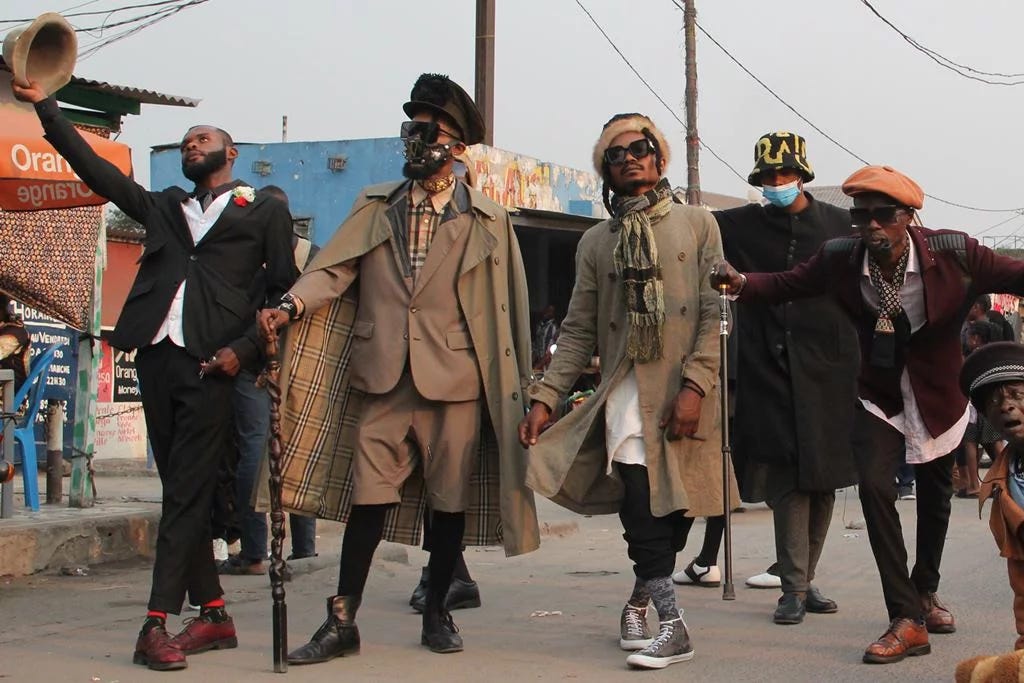The Sapeur’s attire is particularly codified, with every color and motif amplified, as are the accessories: watches, often gussets, glasses, hats, scarves, brooches, ties and bow ties are skillfully chosen in a context of abundance. The sober colors of 18th-century dressing rooms have been relegated to the closet, but the objective remains the same: to be seen and remembered. It's impossible to be indifferent to the sight of a Sapeur, or even to feel underdressed. Like Beau Brummell, the dandy Sapeur knows how to embody his character and play it out in society, just like in a theater.
As mentioned in the last post, the movement sought to oppose French and Belgian colonial rule by embracing and mimicking the "attire of the master." The most notable Sapeurs were also influential figures in the prominent Parisian anti-colonialist group, L’Amicale. In the Sape movement, the image of power is transformed, with the dazzling suit, hat, cigar, and cane serving as symbolic tools to transcend the humiliation of colonial domination.
It is interesting to study how the Sapeurs movement manifests in two distinct styles across two radically different neighboring capitals, a result from the colonisation’s division by Europeans empires. This distinction reveals itself also in the way the Sapeurs dresses and acts, according from their capital of origin. Brazzaville exudes calmness and order, while Kinshasa thrives in its chaotic and mesmerizing energy. In Brazzaville, the emphasis is on elegance and class, whereas Kinshasa embraces street freestyle, a touch of flamboyant excess, and a subversive edge inherited from the presidential era of Mobutu Sese Seko, in power for 32 years.
Today, the Brazzaville Sapeurs gather in cafés, upscale bars, or exclusive venues, still distinguishing itself from the rest of the population. Whereas, the Kinshasa Sapeurs are widely acknowledged by the population in their country, frequently showcasing their style in bustling neighborhood streets, lively bars, and football stadiums during musical and social events. As for the aristocratic dandy, the Sapeurs’s identity does not lie only in costume and displays, but also in their sociological and political behavior. In line with their way of dressing, the Brazzaville’s Sapeurs are also more inclined to follow the government’s politics, whie the Kinshasa’s Sapeurs are less pro-government in their actions.
A key concept not to be forgotten in the world of the Sapeurs is “ambiance”. They put on a performance, drawing crowds and fostering sociability. Their vibrant and luxurious clothing, rhythmic flow of words, music, dynamic movements, and electrifying energy captivate onlookers. This collective admiration reinforces the Sapeur’s status and earns them recognition among their peers.


